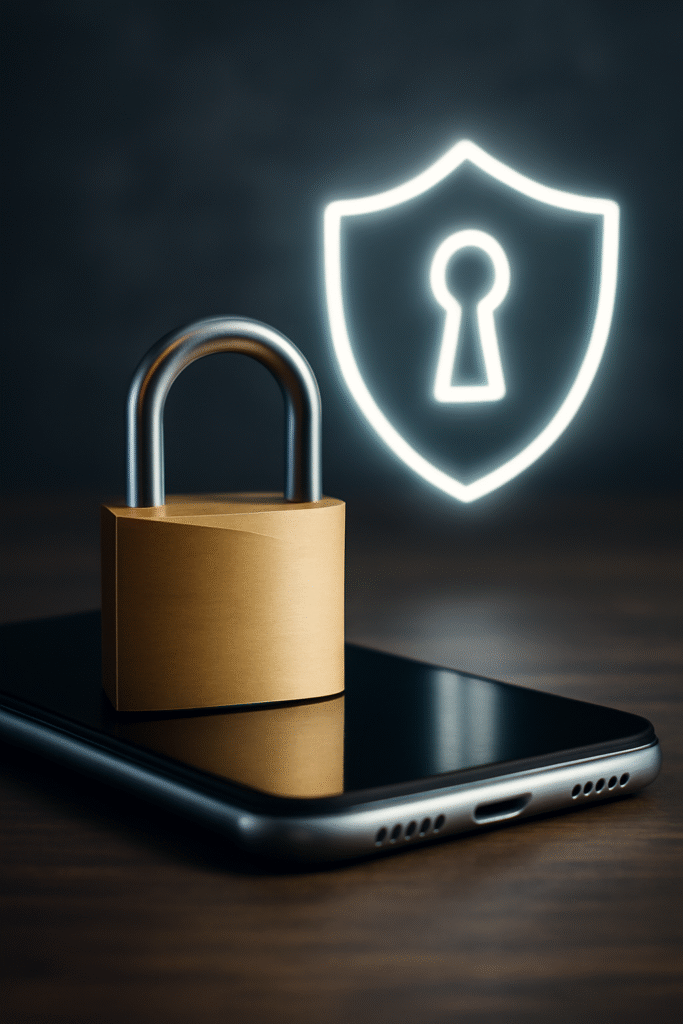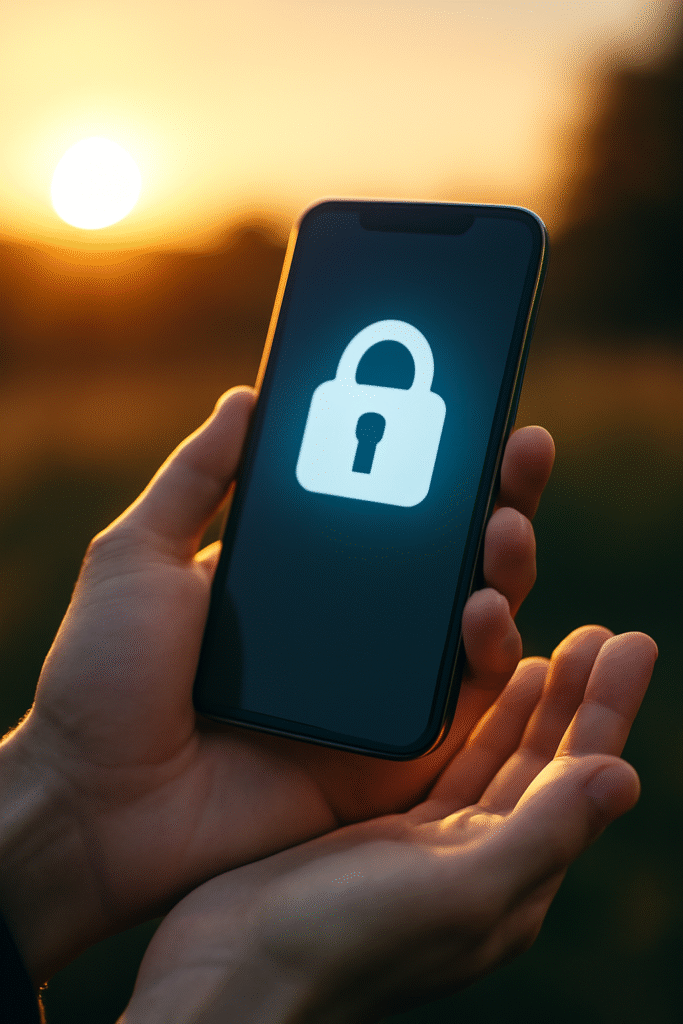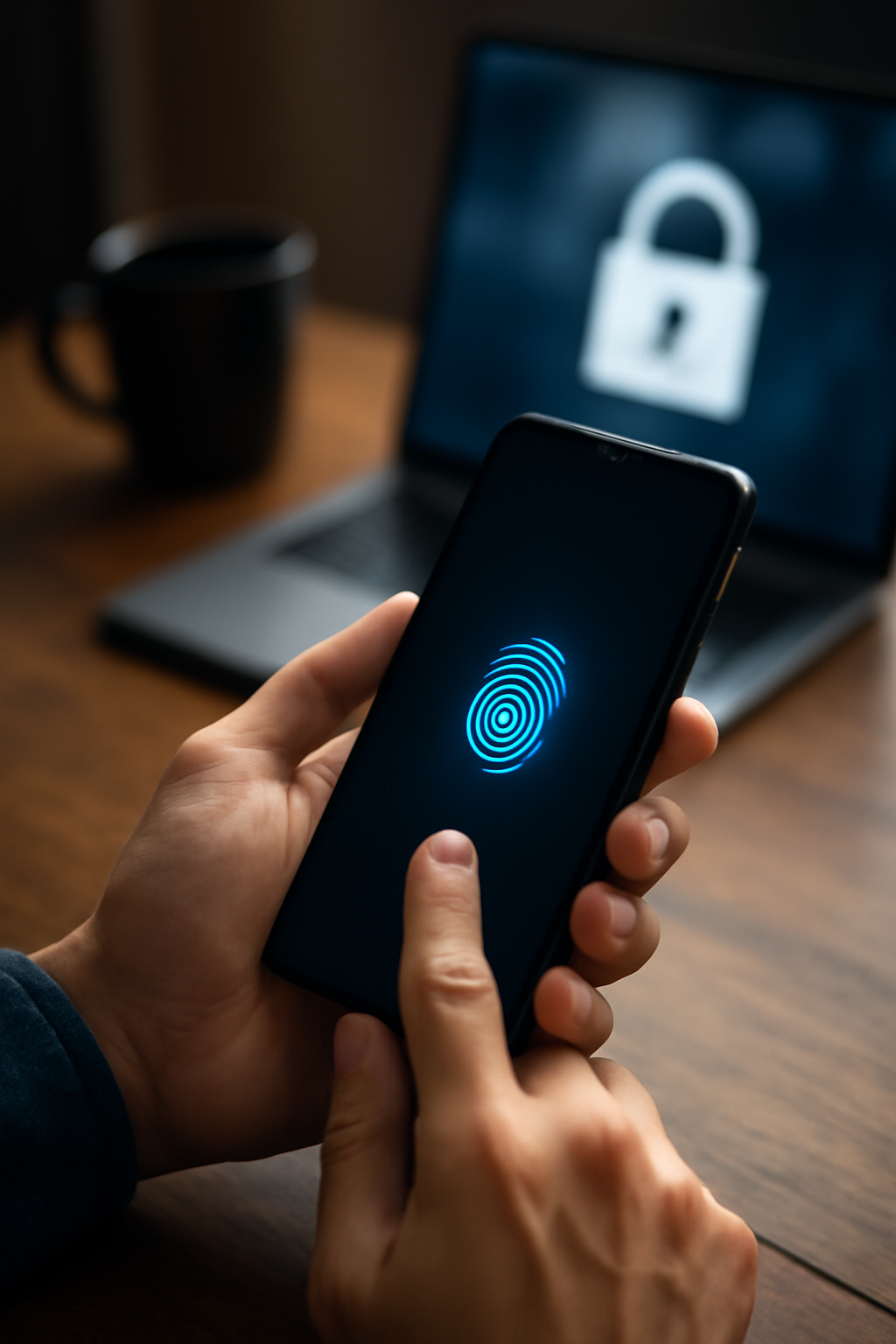Hoje, proteger o celular é proteger a identidade, o dinheiro e a tranquilidade.
O Portal de Bolso para Tudo
Hoje, nossos smartphones se tornaram extensões da nossa memória — e até da nossa identidade.
Dentro de poucos centímetros de vidro e em circuitos, estão guardados, fotos, conversas, documentos pessoais, senhas e dados bancários.
A conveniência é enorme — mas os riscos também.
Cada toque ao instalar um novo aplicativo, cada “aceitar tudo” em banners de cookies, cada conexão em um Wi-Fi aberto pode esconder coletores invisíveis de dados e esquemas de fraude criados para explorar a distração.
Por isso, privacidade digital deixou de ser luxo. Hoje, ela é uma necessidade urgente.
A boa notícia? Você não precisa ser especialista em cibersegurança para se proteger. Hábitos simples e consistentes já são suficientes para transformar seu celular em um espaço muito mais seguro e privado.
Por que a privacidade no celular é tão importante?
Porque o celular concentra praticamente toda a sua vida digital em um único lugar. Quando ele é exposto, o impacto não é pequeno:
• acesso indevido a contas bancárias
• roubo de identidade
• golpes financeiros
• invasão de e-mails e redes sociais
• monitoramento de hábitos, localização e preferências
• uso indevido de dados para manipulação comercial ou política
Diferente de um computador antigo, o celular está sempre com você, ligado, conectado e carregando informações sensíveis em tempo real.
Proteger o celular hoje é proteger sua vida pessoal, financeira e emocional.
E isso começa com consciência — não com medo.

Cada fragmento da sua pegada digital — endereço, localização, lista de contatos — pode ser coletado silenciosamente e comercializado. Entender por que isso importa é o primeiro passo para retomar o controle.
Exposição de dados pessoais
Nomes, endereços, números de documentos e dados de cartão de crédito podem ser coletados sem consentimento claro. Uma vez vazados, esses dados podem ser vendidos, usados indevidamente ou explorados em golpes direcionados.
Rastreamento de localização
Muitos aplicativos sabem onde você está — às vezes, até quando não deveriam. Conceder acesso à localização sem atenção pode revelar rotinas diárias, padrões de deslocamento e hábitos pessoais.
Acesso à câmera e ao microfone
Permissões mal configuradas podem permitir que aplicativos acessem câmera ou microfone, ouvindo ou gravando sem que você perceba.
Publicidade invasiva
Anúncios personalizados nem sempre são inofensivos. Eles se baseiam em rastreamento comportamental. As mesmas métricas usadas para “melhorar a experiência” podem erosionar sua privacidade.
Em resumo, toda conveniência carrega um custo silencioso em informação.
Os erros mais comuns:

Mesmo conhecendo os riscos, muitos usuários continuam ignorando cuidados simples, porém decisivos, para proteger a própria privacidade digital.
Conceder permissões sem pensar
É comum autorizar todos os pedidos de acesso sem questionar. Mas por que um aplicativo de lanterna precisaria dos seus contatos ou da câmera? Antes de permitir qualquer acesso, verifique a real necessidade. Permissão excessiva é sinal de alerta.
Ignorar atualizações do sistema
Software desatualizado é porta aberta para ataques. Atualizações não servem apenas para novos recursos — elas corrigem falhas de segurança já conhecidas. Adiar updates é assumir riscos desnecessários.
Usar Wi-Fi público sem proteção
Aeroportos, cafés e hotéis são ambientes ideais para roubo de dados. Acessar contas bancárias ou e-mails em redes abertas pode expor senhas e arquivos pessoais.
Senhas fracas ou repetidas
PINs simples como “1234” ou padrões óbvios continuam entre as principais causas de invasão. Credenciais fracas ainda são uma das maiores portas de entrada para o roubo de dados pessoais.
Não fazer backup nem usar criptografia
Perder o celular não deveria significar perder sua vida digital. Backups regulares e a criptografia do aparelho garantem que seus dados não desapareçam — nem caiam em mãos erradas.
Formas práticas de proteger sua privacidade
1. Revise permissões de aplicativos com frequência
Abra as configurações do celular e analise o que cada app pode acessar. Limite microfone, câmera e localização apenas ao essencial.
Se um aplicativo simples pede acesso a dados sensíveis, isso é um forte sinal de risco.
2. Ative a autenticação em dois fatores (2FA)
Adicionar uma segunda verificação — como código por app autenticador — bloqueia muitos ataques comuns. Ative o 2FA no WhatsApp, Gmail e redes sociais.
3. Fortaleça a tela de bloqueio
Use biometria (digital ou reconhecimento facial) ou crie uma senha longa e imprevisível, combinando números e caracteres. Evite padrões fáceis de adivinhar.
4. Navegue com atenção
Sempre que possível, prefira dados móveis ao Wi-Fi público.
Se precisar usar uma rede aberta, utilize uma VPN confiável para criptografar o tráfego.
5. Mantenha sistema e apps atualizados
Atualizações automáticas podem incomodar, mas são uma das defesas mais eficazes contra malwares e vazamentos de dados.
6. Reduza o rastreamento de anúncios
Android e iOS permitem limitar anúncios personalizados e coleta de dados para marketing. Um ajuste simples já melhora muito a privacidade.
Ferramentas úteis para uma rotina digital mais segura
Você não precisa de muitos aplicativos — apenas os certos:
Signal ou Telegram
Mensagens com criptografia de ponta a ponta, protegendo conversas.
DuckDuckGo Privacy Browser
Navegador focado em bloquear rastreadores ocultos e preservar o histórico de buscas.
Bitwarden ou 1Password
Gerenciadores de senhas que armazenam logins com segurança e criam senhas fortes automaticamente.
Serviços de VPN confiáveis
Proton VPN, Mullvad ou serviços equivalentes criam uma camada extra de proteção, ocultando endereço e localização reais.
Essas ferramentas formam o que especialistas chamam de perímetro pessoal de segurança — uma combinação de tecnologia, consciência e bons hábitos.
Como manter a privacidade sem complicar a vida
Privacidade funciona melhor quando vira rotina, não obrigação pesada.
Adote práticas sustentáveis:
Agende uma checagem mensal de privacidade
Revise permissões e configurações uma vez por mês. Leva poucos minutos e reduz riscos reais.
Use um gerenciador de senhas
Mais seguro e muito menos estressante do que tentar memorizar tudo.
Ative atualizações automáticas
Proteção constante sem depender da memória.
Pense antes de conceder acesso
Sempre pergunte: este aplicativo realmente precisa disso?
Benefícios imediatos de proteger sua privacidade
Menos risco de golpes e fraudes
Mais controle sobre seus dados
Menos anúncios invasivos
Mais tranquilidade no uso diário do celular
Mais autonomia digital
Proteger sua privacidade não é paranoia.
É autocuidado digital — simples, acessível e cada vez mais necessário.

Levar a privacidade a sério traz benefícios muito concretos — muito além de uma sensação abstrata de tranquilidade.
Mais proteção contra golpes
Reduz significativamente o risco de roubo de identidade e fraudes financeiras, hoje cada vez mais sofisticadas.
Menor exposição a anúncios direcionados
A navegação fica mais limpa, menos invasiva e mentalmente mais leve, sem a sensação constante de estar sendo seguido.
Mais segurança em caso de perda ou roubo do celular
Dados criptografados e backups seguros garantem que sua vida digital continue sob seu controle, mesmo se o aparelho desaparecer.
Tranquilidade mental
Saber que seu dispositivo está protegido traz mais liberdade e menos preocupação silenciosa sobre quem pode estar observando ou coletando informações.
Reflexão: controle é liberdade
Privacidade não é esconder coisas.
Privacidade é posse.
Assumir o controle dos dados armazenados no seu smartphone significa retomar o comando da sua identidade digital.
Cada ajuste de configuração, cada senha fortalecida, cada decisão consciente representa um pequeno ato de autoproteção em um mundo estruturado para a exposição constante.
Seu celular é, no fim das contas, seu — assim como as histórias, memórias e informações que ele carrega.
Ao adotar hábitos simples e consistentes, você transforma a tecnologia de uma ameaça silenciosa em uma aliada.
A segurança não começa no software.
Ela começa na consciência.
Proteger seu smartphone é, em essência, proteger sua liberdade.
